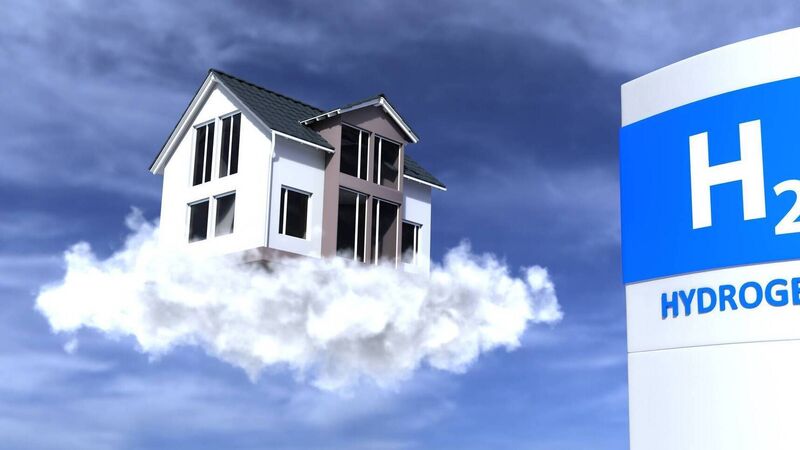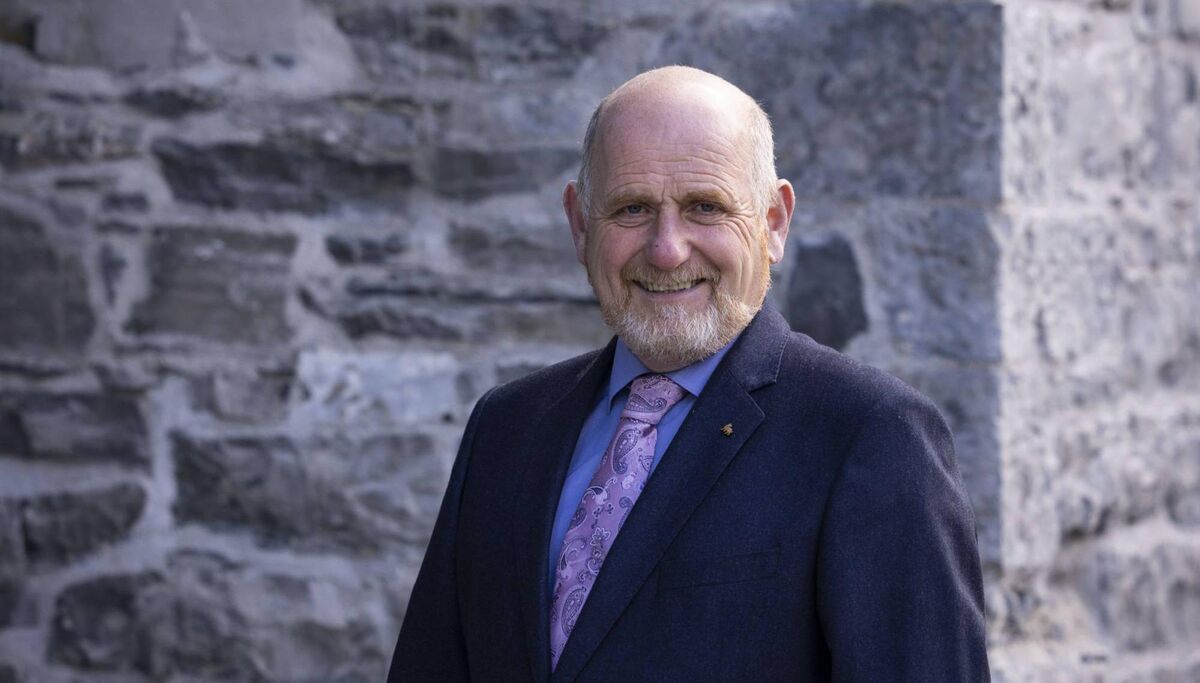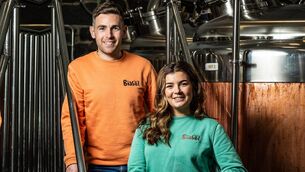Ireland 4.0: Green Hydrogen's role in our energy security

Renewable energy investors are interested in a tender currently being developed for two HGV hydrogen fuelling stations, one in Dublin and one in Belfast — an all-island opportunity, one that finally reflects the shared nature of Ireland’s energy infrastructure.
Oil is just too damn good. It does everything we want. It powers our cars and buses, turns into plastics and polyester, and flows freely. That, says Paul McCormack, is the problem. It’s also the opportunity.
Paul McCormack gave up his job last year to lead Hydrogen Ireland full-time. Not for the money, but for the mission.
“You get to a stage in life,” he says, “where you're fed-up pushing water up a hill. You want to do something that matters. You want to leave a legacy.”

His legacy has a name: Ireland 4.0, a new industrial revolution, powered not by coal or code, but by clean energy. Specifically, green hydrogen.
“Our challenge isn’t just to decarbonise,” he says, “it’s to create an entirely new economy that works in harmony with nature and secures both our energy and job futures.”
McCormack envisions Ireland not just as a consumer of green hydrogen, but as the global testbed for it.
“We’re an island off an island off Europe. That makes us uniquely positioned. Everything here is more expensive, more remote, and more difficult, and that’s exactly why it’s the perfect place to prove that hydrogen can work.”
By ring-fencing Ireland’s energy experiments, McCormack believes we can validate entire systems, from renewable generation to hydrogen production to infrastructure, and then export the IP.
“We test here, we build here, we fail here, and we succeed here. Then we share the model with the world. That’s how we move from being the island of saints and scholars to the island of clean energy solutions.”
McCormack speaks in stories. He weaves together the physics of renewables, the geopolitics of energy, and the psychology of change.
“People always say hydrogen isn’t efficient enough. They talk about round-trip efficiency. I say, let’s talk about round-trip competitiveness. We’re not just replacing an energy system, we’re building a better one, with social, environmental, and economic value baked in.”
At the heart of his vision is system coupling: making intermittent renewables like wind and solar work in sync with electrolysers and hydrogen infrastructure. It’s here that Ireland’s strengths converge with its engineering minds, research institutions, collaborative culture, and political proximity to both the UK and EU.
“We have no legacy steel industry to decarbonise,” McCormack says. “We’re not Germany. That gives us a clean slate. We can build new industries with green hydrogen as the catalyst, not the clean-up crew.”
And while Ireland has historically been late to the game, the 2023 hydrogen strategy was, in his words, “a bit like chicken soup with too much chicken taken out” there are signs of momentum.
A new pilot funding programme is under review. The government is preparing a tender for two HGV hydrogen fuelling stations, one in Dublin and one in Belfast. McCormack describes this as an all-island opportunity, one that finally reflects the shared nature of Ireland’s energy infrastructure.
“We have a multi-jurisdictional energy network across the North and South. It’s a challenge, yes, but it’s also a superpower. If we can create policies and protocols that work across those borders, we can export that know-how to any divided region in the world.”
That cooperative spirit is key. McCormack references the success of Irish agricultural co-ops like Kerry Group.
“We work best when we work together. Hydrogen Ireland isn’t just a name, it’s a network. We’ve built relationships with policymakers in Dublin, Belfast, Brussels and London. We’ve worked with ESB, Bord Gáis, and grid operators. We’ve spoken at the British Embassy. This is about collaboration.”
Part of that collaboration includes global visibility. In October, Dublin will host the World Hydrogen Technologies Convention (WHTC 2025), bringing international leaders in clean energy to Ireland’s doorstep. McCormack sees this as a pivotal moment.

“The world will come and see what we’re doing and what we’re capable of.”
He’s careful not to overpromise. “This is not a silver bullet,” he says, quoting his colleague Mark Welsh, director of Hydrogen Ireland formerly Energia.
“It’s a silver buckshot. Hydrogen won’t solve everything, but it can solve a lot, especially if we focus on the right fit for our context.”
That context includes Ireland’s unusually high energy costs, its reliance on imports, and its need to compete in a European market where, as McCormack puts it, “we’re not even making weight.”
Like a boxer who needs to qualify, Ireland must raise its ambition, not just for its own sake, but to pull its weight in the wider EU transition.
So where are we now? “We’re moving,” McCormack says, “step by step. We’re not there yet, but the direction is right. And moving in the right direction is what matters most.”
When asked how close we are to the vision, McCormack’s answer is characteristically layered.
“Some countries are ahead because they’ve had to be. We’ve been complacent. But now we have a window. The political landscape is more balanced, the funding mechanisms are evolving, and we have the talent, the tech, and the tenacity.”
www.WHTC2025.com
Dr. James Carton’s journey with hydrogen began three decades ago in a shed, where as a teenager he converted his father’s petrol lawnmower to run on hydrogen for the Young Scientist competition.
Today, as an Assistant Professor at Dublin City University, he’s urging Ireland not to miss its biggest energy opportunity in a generation.

Green hydrogen, he argues, is not a niche idea. It’s a critical solution for storing and managing Ireland’s growing supply of renewable energy, particularly from offshore wind.
“On very windy days in the future, up to 80% of that renewable energy could be wasted unless we have the means to store it,” he says.
Unlike batteries, hydrogen can store vast amounts of energy for long periods and release it on demand, making it ideal for balancing the grid, supporting heavy industry, and decarbonising sectors like aviation and long-haul transport.
“Hydrogen won’t replace everything, not heat pumps, not EVs, but where no other solution fits, hydrogen fits perfectly.”
But time is running out. Dr Carton warns that investment decisions made today will shape our energy future for decades. The government’s consideration of a liquefied natural gas (LNG) terminal, with an estimated cost of up to €1 billion, is, in his view, a strategic mistake.
“It’s short-sighted. That money should be used to fund hydrogen and battery storage pilots instead,” he says.
Crucially, Dr Carton does not call for massive spending all at once. Instead, he advocates for modest but targeted investment, hundreds of millions, not billions, in regional hydrogen demonstration projects.
“We have the offshore wind. We have the infrastructure. We have even the plastic gas pipelines that can carry hydrogen. What we need is political urgency.”
With countries like Germany already expressing interest in importing green hydrogen from Ireland, the window of opportunity is real, but not indefinite.
“If we wait until 2036,” Dr Carton says, “the global market will have moved on without us.” For Ireland, green hydrogen offers more than just clean energy. It offers economic security, reduced reliance on fossil fuels, and the chance to lead. But only if Ireland moves quickly.








